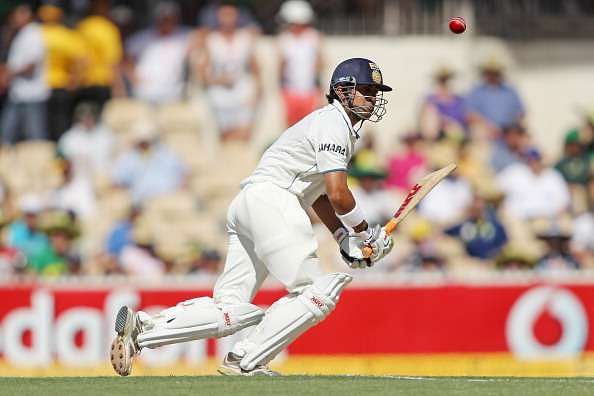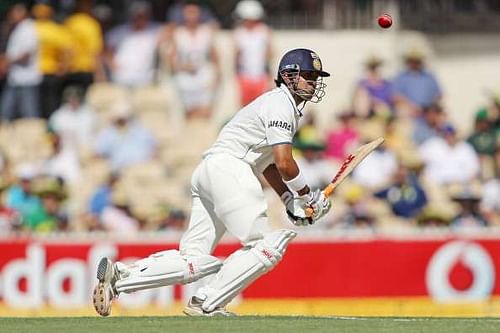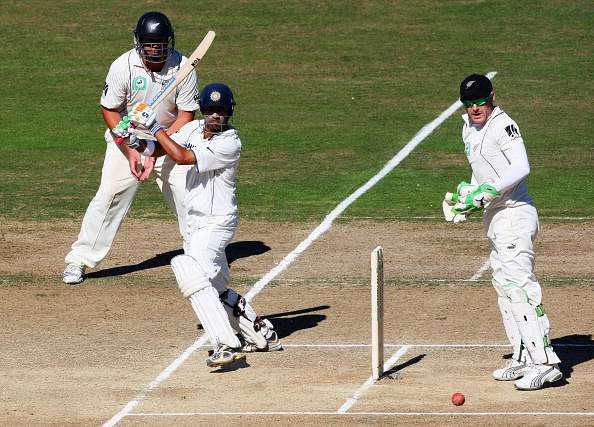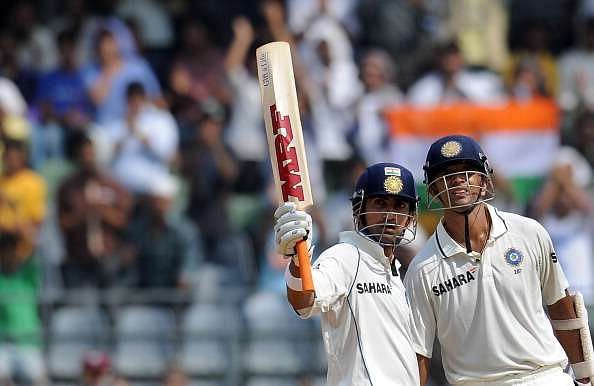
Gautam Gambhir - A story of adversity thwarted and reality defied

Looks can deceive.
What meets the eye is often just the partial truth, or even a gross lie. It’s never the complete picture, like a jigsaw with many missing pieces. Sometimes, the pieces belong not to one puzzle, but to countless others, the ones we know nothing about.
Far from partially concealing the truth, sometimes they lead us into a direction completely opposite to reality. Most of the times, you won’t even have the slightest clue that you’ve been conned, cheated in a manner your intellectual self can’t come to terms with.
It’s tough to tell, really.
The best books may have the worst covers. The worst ones, the best.
The toughest people may have the softest exteriors. The softest ones, the toughest.
But things are different with Gautam Gambhir. With him, you can tell. When he steps onto the Cricket field, even off it, his demeanour gives it away. He looks angry. He is. He looks like a force that’ll stand up to, if not defeat every adversity that there can possibly be. He is.
Cricket, a mere game for us ordinary folk, is his battlefield. What for us is a contest between bat and ball, for him is a war. To win is what everyone wants, but it’s the fight, the show of courage that Gambhir craves. That’s his driving force, his addiction.
It’s all written there on his face, in bold.
And it won’t have been clearer had he said it under oath.
****

In the March of 2009, the Indian team is playing New Zealand in a Test at Napier. They have just won the first match by ten wickets.
If you believe them commentators and us writers, the momentum should have been with India. But our sixth sense or supposed expertise is not up to scratch. Two and a half days into the game, India are following on, staring at a 314 run deficit. A mountain. Kilimanjaro? Maybe Everest would suit better.
A win is out of question, unless of course it turns out that our collective minds are making a mockery out of us and this is actually a game of stick cricket. Fortunately or unfortunately, it’s not.
Thus, the struggle is to survive. The motivation is lesser, for there aren’t the rewards that a victory brings about. There’s nowhere near enough glamour for a hard-earned draw. Not many people tweeting, “OMG India! Yay! What a draw! By far the draw of the century! #bestindiandraw #indvsnz #proudindian.”
There’s nowhere near enough romance associated with it. The analysts, those who will probably one day find the cause of the universe reading ‘between the lines’ an essay on why cats are so annoying, will say that the basic essence of a draw, i.e not losing, is also a pessimistic statement. And no person in their right mind would want to celebrate that.
But then, that’s just one side of the coin. And it’ll be incorrect to look into a draw in isolation. It’s important to sometimes just learn to not let go of things, to survive when there is no possibility to thrive, to accept the circumstances we ourselves, or this angelic/demonic force called life has put us in.
More than winning, maybe it’s this fight for survival that makes us, that defines us.
Back in Napier, it was this fight that India was facing. And there was no one more equipped for a challenge like this than Gambhir. Two and a half days to go, more than two hundred overs to bat. The support, dwindling. The hope, virtually lost.
He came out, all determination and grit. No audaciousness, no swagger that his opening partner, the dasher from Najafgarh carried.
Those two and a bit days, Gambhir defended as if the existence of humanity depended on the match. There was nothing Daniel Vettori, Chris Martin, Iain O’Brien or Jeetan Patel could do to drag him off the wicket.
Bowl it outside the stumps and he would leave it alone, bowl it within and he would dead bat it right in front of his nose. He repeated it so often he’d probably even be able to do a PhD on the different smells of leather if he wishes.
He blocked the heat, the tricks of the Kiwi bowlers, the sledges, the frustration at how some of his teammates gave their wickets away, the loss of energy. He blocked the noise inside which tells you to give up, he blocked what was the obvious reality and changed it. For almost eleven hours, Gambhir stood at the wicket, chasing not glory, but rather embracing the fight for survival.
Like many a war hero, he knew further territories couldn’t be conquered. His army didn’t have the personnel, or the requisite machinery. The only thing remaining was to save the territories previously conquered. That was the motive and for him, it much more than enough.
His score before he was given lbw to Jeetan Patel in the afternoon of the last day stood at 137. But that day, the numbers that mattered more were 436 and 643, the balls he faced and the minutes he spent at the wicket.
In the Indian team, there were, there are and there will be better players than him, but you’ll struggle to find too many who could have produced the innings that he did in Napier. In more ways than one, it was the most epic of epics, right up there with VVS Laxman’s 281 at Eden Gardens and Rahul Dravid’s 233 at the Adelaide Oval.
The Napier game ended in a draw, India needing to bat just about 20 overs after Gambhir fell in the 160th.
No one rushed onto the pitch, there were no celebratory jigs. No hullaballoo. No noise. No adrenaline rush. No fuss. Just warm, content smiles.
After all it wasn’t a battle won, just a defeat averted. What’s so special about that?
Maybe the ability to march on even when there’s no scope for glory. Isn’t that a touch, just a touch romantic? Just ask Gambhir, you’ll get your answer even before he speaks.
****

In the first week of 2011, India took on South Africa in a series-deciding Test match in Cape Town. South Africa were breathing fire, Dale Steyn and Morne Morkel proving more threatening than a bunch of kleptomaniacs let loose in a jewellery market.
India needed a win. Even a draw would do.
India had never not lost a series in South Africa, let alone winning. This was their chance, their opportunity.
And Gambhir once again played the central character, one of two chief architects in this most grandest of rejections, this refusal to surrender. A 318 minute 93 and a 271 minute 64. Again, a series drawn. A defeat averted.
And this was not the only time the face of Gambhir’s bat has given dizzying spells to traditional cricket tragics. It was not an excpetion, Gambhir’s ability to ensure India doesn’t lose. It was slowly becoming a norm.
If a legend on Gambhir is ever written, apart from the knock in the World Cup final, it’ll comprise of solid, understated innings like this one. Or the one in Napier. Or the pair of fifties in Galle when Ajanta Mendis was so powerful he could ensure the rise and fall of the world economy through the touch of his fingers, quite literally.
In most cases, his innings didn’t turn out to be ones that won matches but ones which defied defeat.
In a team full of players with enough flourish to hum along while eking out a victory from thin air, it was only Gambhir, apart from Dravid obviously, who could consistently conjure these magnificent rearguards and give future writers of these yet unwritten ballads plenty to create their own magic from.
His outlook on the game was different. So was he.